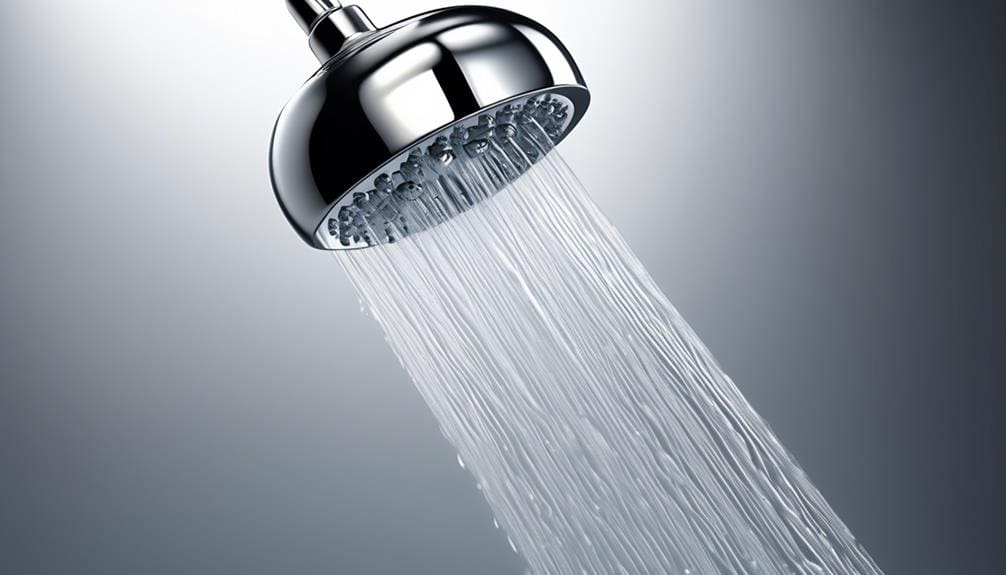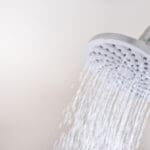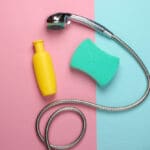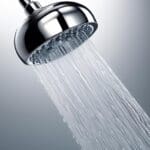If your shower head has decided to part ways with its arm, it’s not the end of the world; it’s a common hiccup that you can fix with a bit of know-how.
You’ll need to start by identifying the right adapter for your shower’s ball joint—a task simpler than it sounds.
After securing the necessary parts, removing the old shower head and attaching the adapter will feel like a breeze, but ensuring a snug fit without overtightening requires a delicate touch.
As you prepare to reattach the shower head and test for leaks, remember, the devil is in the details.
This process not only restores the functionality of your shower but also offers a satisfying glimpse into basic home maintenance, leaving you equipped for more than just this task.
Key Takeaways
- Gather the necessary tools and protect the shower head and arm
- Inspect the ball joint for cracks, corrosion, and proper fit
- Apply plumber’s tape for a tight seal when reattaching the shower head
- Test for leaks and make necessary adjustments to stop leaks.
Gather Your Tools
Before you begin the task of reattaching your shower head, make sure you’ve gathered all the necessary tools listed above. You’ll need an adjustable wrench to tighten or loosen parts. This tool is essential for adjusting the fit of the shower head to the ball joint. Don’t start without it, as using the wrong tool can damage your shower components.
Next, grab a towel or rag. You’ll use this to protect the finish of your shower head and arm when you’re using the wrench. It acts as a buffer, preventing scratches or damage.
The shower head adapter is crucial. It must be specific to your ball joint shower arm. Without the correct adapter, you can’t ensure a secure fit. Check the model of your shower arm before purchasing an adapter to avoid mistakes.
Washers are small but mighty. They create a tight seal, preventing leaks. Ensure you have the right size and number of washers ready.
Lastly, have a tape measure on hand. It’s vital for measuring specific dimensions of your shower arm and head, ensuring everything fits perfectly.
Inspect the Ball Joint
Having gathered your tools, it’s crucial to carefully inspect the ball joint for any signs of wear or damage. This part is pivotal in ensuring your shower head moves smoothly and remains secure. Start by examining the surface for any noticeable cracks or splits. Even a small crack can lead to a bigger issue down the line, potentially causing water leakage or a complete failure of the shower head to stay in position.
Next, check for signs of corrosion or buildup. These can interfere with the movement of the joint and may even cause it to seize, making adjustment difficult or impossible. If you spot any buildup, it’s a good idea to clean it off thoroughly before proceeding.
Also, feel the texture of the ball joint. It should be smooth without any rough patches or abrasions. Roughness can indicate wear and tear that mightn’t be immediately visible. This wear can impair the joint’s ability to hold the shower head in place securely.
Lastly, ensure the ball joint fits snugly within its housing. Any looseness could lead to instability, affecting the water flow direction. If the ball joint doesn’t sit right, it might be time to replace it before reattaching the shower head.
Apply Plumbers Tape
To ensure a secure and leak-free connection, start by wrapping plumber’s tape clockwise around the threaded end of the shower arm. This simple step is crucial for preventing water leakage and ensuring that your shower head stays firmly in place. When done correctly, applying plumber’s tape can make a significant difference in the functionality and longevity of your shower setup.
Here are some key points to keep in mind:
- Wrap the tape around the threads at least three times for a tight seal. This ensures that every thread is covered, providing a thorough barrier against leaks.
- Make sure the tape covers the entire threaded area and avoid overlapping onto the non-threaded section. Precision here prevents any potential for leaks and ensures a smooth fit.
- Press the tape firmly onto the threads to ensure it adheres properly. This step is vital for securing the tape in place and preventing it from unraveling when you screw on the shower head.
- Screw the shower head onto the threaded end of the shower arm, applying gentle pressure to create a snug fit. This final step ensures that your shower head is securely attached and ready for use.
Reattach the Shower Head
After applying plumber’s tape, it’s time to reattach your shower head by screwing it onto the adapter’s male thread. Start by aligning the threads of the shower head with the adapter carefully. Once aligned, rotate the shower head clockwise. You’ll want to ensure it’s hand-tight to secure it properly in place. Remember, the goal here is to avoid overtightening. Applying too much force can damage both the shower head and the adapter, leading to potential leaks or the need for replacements.
As you tighten the shower head, pay attention to its orientation. Make sure it’s facing the direction you want before it’s fully tightened. This step is crucial for achieving the optimal shower experience once reinstalled.
Test for Leaks
Once your shower head is securely in place, it’s crucial to check for any leaks. Even a small leak can lead to significant water waste and potential damage over time. To ensure a tight seal and proper installation, follow these steps:
- Turn on the Water: Slowly turn on the water to your shower and observe the connection points. It’s easier to spot leaks with a steady water flow.
- Wipe Dry and Reinspect: With a dry cloth, wipe around the base of the shower head. This makes new leaks visible, as they’ll wet the cloth or the area you’ve just dried.
- Listen Carefully: Sometimes leaks can be heard before they’re seen. Turn off any distracting noises in the bathroom and listen for the telltale sound of dripping or a faint hiss.
- Feel for Drips: With the water still running, run your fingers along the connection points. Water escaping will be immediately noticeable, even if it’s not visible.
If you find a leak, don’t panic. Often, tightening the connection or applying plumber’s tape can fix the issue. Recheck after any adjustments to ensure the leak has been successfully stopped.
Frequently Asked Questions
How Do You Reattach a Shower Head Ball?
To reattach your shower head ball, remove the old shower head, insert the adapter’s fat end into the ball joint, and tighten it with a towel for grip. Ensure you’ve installed a washer inside.
How Do You Put a Shower Head Back On?
To reattach your shower head, first ensure it’s compatible with your shower arm. If needed, secure an adapter for the ball joint. Then, hand-tighten the shower head to prevent leaks, avoiding over-tightening.
How Do You Fix a Shower Ball?
To fix a shower ball, first identify the correct adapter for your shower arm’s brand. Unscrew the old head, fit the adapter snugly into the ball joint, and tighten it by hand to avoid leaks.
What to Do if Your Shower Head Pops Off?
If your shower head pops off, first check the threads for damage. You’ll need to replace the shower head or the arm if they’re stripped. Otherwise, screw it back on, ensuring it’s tight.





